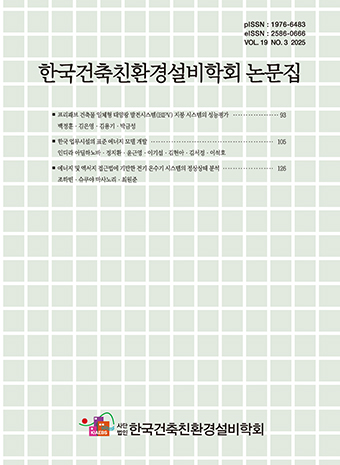Research Article
Abstract
References
Information
Buonanno, G, Morawska, L, Stabile, L. (2020). Quantitative assessment of the risk of airborne transmission of SARS-CoV-2 infection: Prospective and retrospective applications. Environ Int., 145, 106-112. DOI: 10.1016/j.envint.2020.106112. Epub 2020 Sep 6. PMID: 32927282; PMCID: PMC7474922.
10.1016/j.envint.2020.10611232927282PMC7474922
Ueki, H., Furusawa, Y., Iwatsuki-Horimoto, K., Imai, M., Kabata, H., Nishimura, H., Kawaoka, Y. (2020). Effectiveness of Face Masks in Preventing Airborne Transmission of SARS-CoV-2. mSphere. 5(5), e00637-20. DOI: 10.1128/mSphere.00637-20. PMID: 33087517; PMCID: PMC7580955.
10.1128/mSphere.00637-2033087517PMC7580955
- Publisher :Korean Institute of Architectural Sustainable Environment and Building Systems
- Publisher(Ko) :한국건축친환경설비학회
- Journal Title :Journal of Korean Institute of Architectural Sustainable Environment and Building Systems
- Journal Title(Ko) :한국건축친환경설비학회논문집
- Volume : 15
- No :4
- Pages :395-404
- Received Date : 2021-07-19
- Revised Date : 2021-08-02
- Accepted Date : 2021-08-03
- DOI :https://doi.org/10.22696/jkiaebs.20210034




 Journal of Korean Institute of Architectural Sustainable Environment and Building Systems
Journal of Korean Institute of Architectural Sustainable Environment and Building Systems








